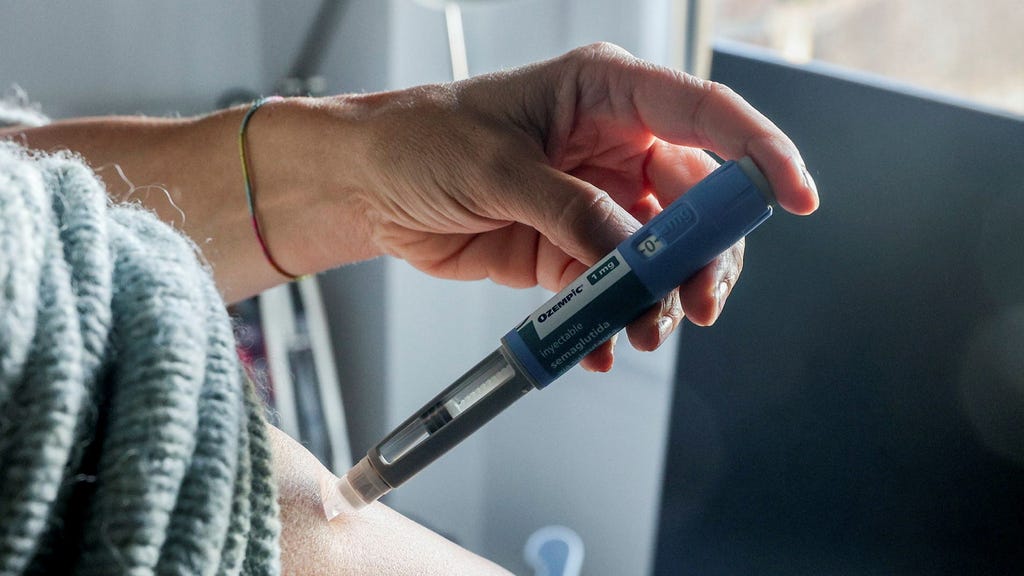Two independent studies conducted by researchers at the University of Southern Denmark have revealed a potential link between the use of Ozempic, a medication primarily used for treating type 2 diabetes, and the development of non-arteritic anterior ischemic optic neuropathy (NAION), a serious eye condition. This discovery has raised concerns within the medical community and prompted further investigation into the safety profile of the drug.
NAION is characterized by the sudden disruption of blood flow to the optic nerve, leading to a gradual decline in vision. Currently, there is no effective treatment for this condition, making its prevention a crucial aspect of eye health. The optic nerve plays a vital role in transmitting visual information from the eye to the brain. When its blood supply is compromised, the nerve fibers can become damaged, resulting in vision loss. The severity of vision impairment varies depending on the extent of nerve damage.
The first study conducted by the Danish researchers involved a comprehensive analysis of data from all patients diagnosed with type 2 diabetes in Denmark. This nationwide dataset provided a large sample size and allowed for a robust assessment of the association between Ozempic and NAION. The second study expanded the scope of investigation by including both Danish and Norwegian patients treated with Ozempic or other comparable medications. This comparative approach enabled the researchers to isolate the specific effects of Ozempic on NAION risk.
Both studies yielded consistent findings, indicating a twofold increase in the risk of developing NAION among patients using Ozempic compared to those treated with other medications. This heightened risk has alarmed healthcare professionals, particularly ophthalmologists, who are witnessing a surge in NAION cases. Professor Jakob Grauslund, an ophthalmology specialist and co-author of one of the studies, noted a significant increase in observed NAION cases, from 60-70 annually to approximately 150. This sharp rise coincides with the increased usage of Ozempic, further strengthening the suspected link between the medication and the eye condition.
The impetus for these Danish studies stemmed from an earlier American study that also hinted at a potential link between Ozempic and an increased risk of NAION. In response to these accumulating concerns, the Danish Medicines Agency has formally requested the European Medicines Agency (EMA) to undertake a thorough review of the available evidence and assess the potential connection between Ozempic and NAION. The EMA’s investigation will play a crucial role in determining whether regulatory action, such as updated safety warnings or restrictions on Ozempic use, is warranted.
Despite the observed increased risk, researchers caution against patients prematurely discontinuing their Ozempic treatment. NAION remains a relatively rare condition, and the absolute risk of developing it while on Ozempic is estimated to be around 0.2 per thousand patients per year, based on the Danish study results. This translates to approximately 2 cases of NAION for every 10,000 patients treated with Ozempic annually. Therefore, the benefits of controlling blood sugar levels with Ozempic, which can help prevent serious diabetes-related complications, may still outweigh the relatively low risk of NAION for most patients. However, patients should be informed about the potential risk and discuss it with their physician to make an informed decision about their treatment.
Novo Nordisk, the pharmaceutical company that manufactures Ozempic, has acknowledged the studies and conducted their own internal evaluation of the data. However, they have not found sufficient evidence to warrant any revisions to the drug’s safety profile at this time. This stance suggests that Novo Nordisk believes the current benefits of Ozempic outweigh the potential risks identified in the studies. The company’s response highlights the complex balancing act involved in assessing drug safety and emphasizes the need for ongoing monitoring and investigation to ensure patient safety while maximizing the therapeutic benefits of medications. The EMA’s review will provide further clarity on this matter and potentially inform future prescribing practices for Ozempic.














